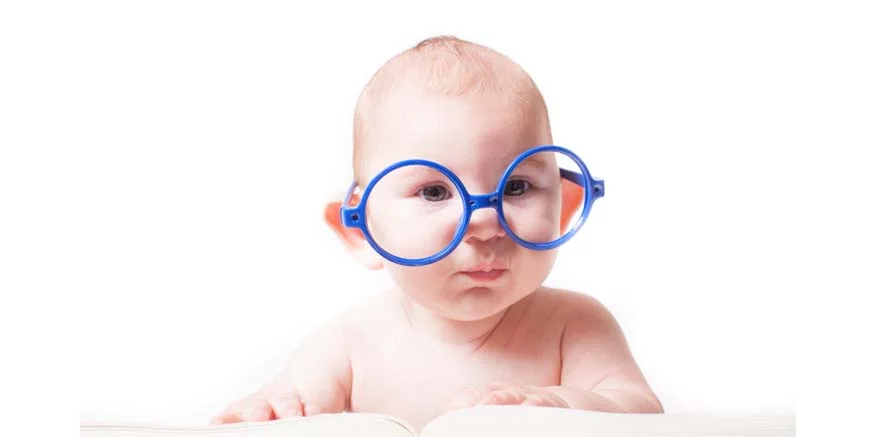As infants come into the world, their senses become the main way for them to explore it. Vision, in particular, is a vital sense that undergoes significant development in the early years of life. Although newborns have fully developed eyes, their brain’s ability to process visual information experiences substantial growth as they mature. For parents and caregivers, understanding how to aid this development is vital. Herein, we explore practical tips that can help babies effectively develop their vision, enhancing their ability to comprehend and interact with their surroundings.
Also Read: Toddler Eye Infections
- Provide Plenty of Tummy Time
- Vary the Visual Stimulation
- Use Motion for Visual Tracking
- Provide Face-to-Face Interaction
- Encourage Reach and Grasp Techniques
- Change the Scenery
- Limit Screen Time
- Periodic Check-ups with Paediatric Ophthalmologist
- Excessive tearing or redness in the eyes
- Constant eye-rubbing
- Extreme sensitivity to light
- Bulging eyes
- Drooping eyelids
- Poor tracking of objects
- Appearance of a white pupil
- Misalignment of the eyes
- Excessive tearing or discharge
- Cloudiness in the pupil
- Unusual eye movements
- Delay in reaching visual milestones
- Create a Sensory-Safe Room
- Sleep in a Dark Environment
Tummy time is crucial for more than just motor development. Placing babies on their stomachs encourages them to lift their heads, strengthening essential neck muscles for visual tracking. This position also provides a different view of the world, aiding in-depth perception as they explore. Strive for a few minutes of tummy time multiple times a day, gradually increasing as your baby gets more comfortable with it.
An infant’s visual system thrives on a variety of stimuli. To support this, introduce your child to different patterns and colours. Black and white or high-contrast patterns are particularly engaging for young infants as their colour vision is not fully developed yet. As the baby grows, you can include more colourful objects to help differentiate hues and enrich the visual experience.
Around 2 to 3 months of age, a baby starts tracking moving objects with their eyes. Support this milestone by gently moving toys or objects back and forth in their line of sight. This allows them to practise following movements visually.
Babies love observing faces, especially of their parents. A sufficient amount of face-to-face interaction is vital for their social, emotional, and visual development. This practice aids in their focus and enhances the strength of their eye muscles. Smiling and making various expressions can engage their attention and encourage visual focus.
At about 4 months, babies begin matching their eyes with their hand movements. Help in their coordination by letting them reach for safe and easy-to-hold toys. This promotes the integration of their visual and motor skills.
Also Read: Should You Apply Kajal or Surma To Newborn’s Eyes?
New environments can stimulate your baby’s vision, helping them to develop better awareness of varying spaces. Whether it’s walking around the house, going for a stroll outside, or simply changing the room in which they spend most of their time, changing the scenery can be very beneficial for visual development.
It is recommended to avoid screen time for children under 18 months. Screens can emit intense light and colours that may be too stimulating for a baby’s developing eyes and also can hamper the development of imaginative play and physical activities which are crucial for overall development.
Finding and treating eye issues early is important to avoid long-term problems. Regular vision screenings during well-child visits can catch potential problems. If there are concerns, a paediatric eye doctor can provide specialised care.
Make sure the spaces where your baby spends time are well-lit and free from potential hazards that could harm their developing eyes. Choose soft lighting over harsh overhead lights, as babies are sensitive to brightness, and their eyes can be easily overwhelmed.
Around 11-12 months, the baby gets more visually oriented to the environment at home. Expose them to visually appealing pictures, and take them out in the open to recognise plants and people. Peek-a-boo becomes their favourite game at this point.
Also Read: Nutrient Benefits Of Carrots For Children’s Eyesight
Quality sleep is crucial for the development of vision as it provides the visual system with an opportunity to rest and rejuvenate. A dark or dimly lit room for naps and nighttime sleep can provide an appropriate environment for visual rest.
At EuroSchool we believe, supporting your child’s visual development is about providing appropriate stimuli and environments suited to their developmental stage. Our experienced staff ensure we involve children in a variety of activities that promote good eyesight, helping them see the world clearly and confidently. Keep in mind that each child is different, and their development may vary. However, always adhere to the advice and suggestions of your paediatric healthcare provider.
Disclaimer:
The information provided on this website is not a substitute for professional medical advice. EuroSchool encourages you to consult with a qualified healthcare professional for any health concerns you may have. The information on this website is not intended to diagnose, treat, cure, or prevent any disease.









